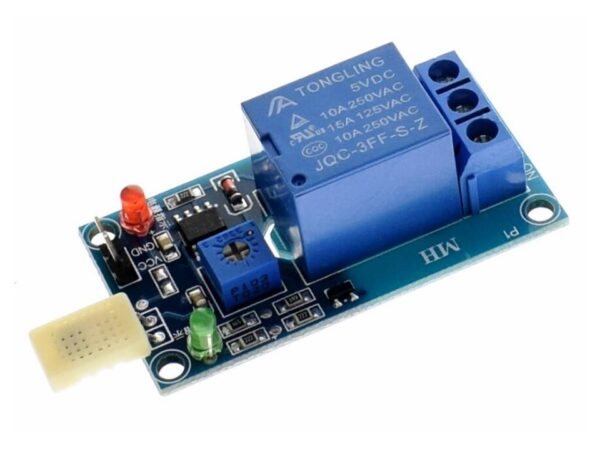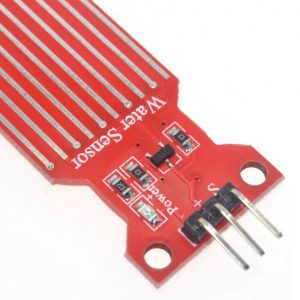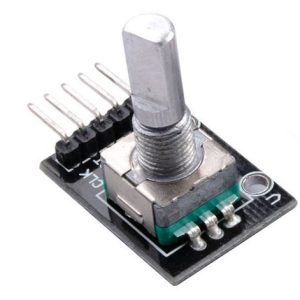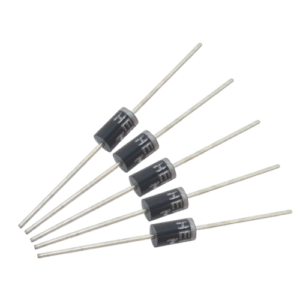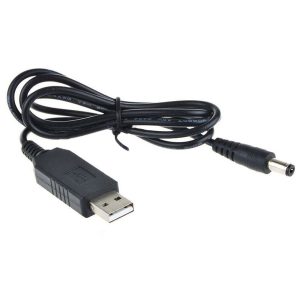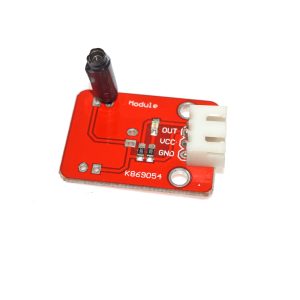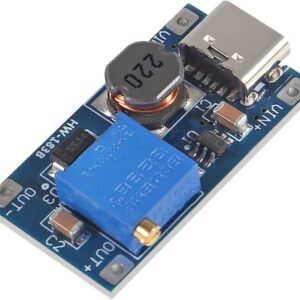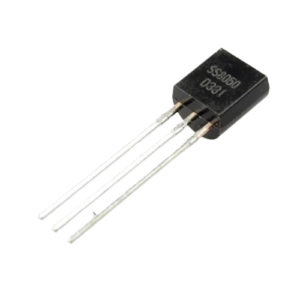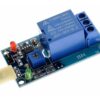5V 1 Channel Humidity Sensor Relay Module
HR202 DC 5V 1 Channel Humidity Sensitive Switch Relay Module Humidity Controller Humidity Sensor with Indicator
4 in stock
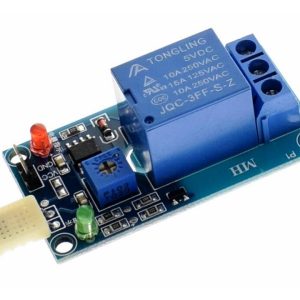
4 in stock
5V 1 Channel Humidity Sensor Relay Module is an electronic switch that turns a device on and off depending on the humidity of the surrounding atmosphere.
This self-contained switching module energises / de-energizes a relay based on the humidity level. Just add 5V power and hook up the load you want to control, then adjust the potentiometer to set the relative humidity level at which you want the relay to switch between ON / OF
it can use this type of module for applications such as automatically turning on an exhaust fan when the humidity gets above a preset level, as might be the case in a greenhouse or aquarium room, or you could use it to energise a misting system, such as for orchids when the humidity drops below a preset level
Features:
- Operating Voltage: 5 V
- Operating Current: >150 mA
- Maximum Load: 250 V 10 A (AC) / 30 V 10 A (DC)
- HR202 moisture sensor
- power indicator(red), relay status indicator(blue)
- potentiometer to adjust the sensitivity
- Four fixed bolt holes for installation
- Size: 50mm x 26mm x 19mm
- LED indicator when the relay is energised
Package included: 1 x 5V 1 Channel Humidity Sensor Relay Module
Check out our On Sale and Clearance Items
Development Resources: demo codes, schematics, datasheets, etc
![]() Hackaday serves up Fresh Hacks Every Day from around the Internet.
Hackaday serves up Fresh Hacks Every Day from around the Internet.
![]()
Instructables is a community for people who like to make things. Explore, share, and do your next project with us!
![]() Where the world builds software
Where the world builds software
 Raspberry Pi Foundation What would you like to make today?
Raspberry Pi Foundation What would you like to make today?
![]() Arduino‘s mission is to enable anyone to enhance their lives through accessible electronics and digital technologies.
Arduino‘s mission is to enable anyone to enhance their lives through accessible electronics and digital technologies.
![]()
Wikipedia is a free online encyclopedia created and edited by volunteers worldwide and hosted by the Wikimedia Foundation.
Notes:
1. There may be slight size deviations due to manual measurement, different measuring methods and tools.
2. The picture may not reflect the actual colour of the item because of different photographing light, angles and display monitors.
| Weight | .017 kg |
|---|---|
| Dimensions | 6 × 9 × 1.9 cm |
Product Applications
These are nice inexpensive modules that will work for many applications and allow you to control devices based on humidity without the need to have an MCU involved. Just hook up 5V power and your load, fiddle with the adjustment and you are all set.
The adjustment is not an absolute value, rather it is a relative value so it is not possible to adjust it to switch at exactly 60% humidity for instance. It takes a little trial and error to get it to switch at the approximate humidity value where you want it to switch.
We do find the DC rating of the relay to be too aggressive. With DC voltages above about 15V, the contacts can become a little sticky. We recommend using it to switch DC voltages of no more than 15V.
With AC, the relays performed well in our testing switching 120V @ 10A.
To test the device, connect it to power and adjust the pot so that the green LED just goes out. Breathing on the humidity sensor which increases humidity should cause the green LED to come on and an audible click heard from the relay as it switches. After a short while, the relay should switch back off as the humidity falls.

